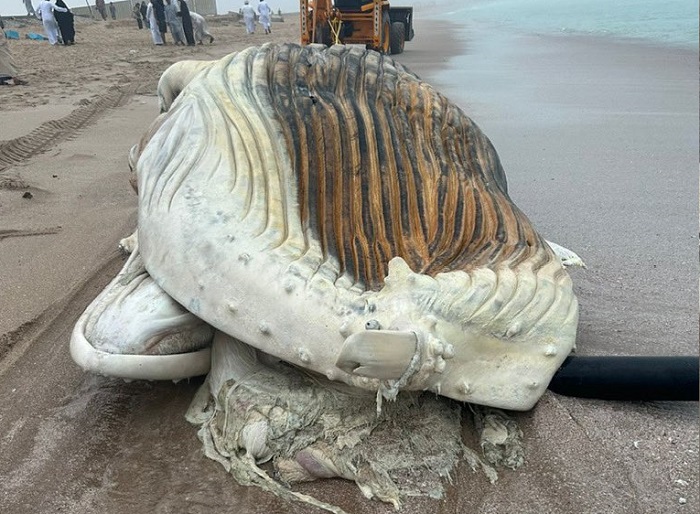The sight of a humpback whale washed off the beach of Al Ashkharah after being trapped in the fishing nets left over by fishermen was a painful sight.
These types of incidents have become common in high seas as a result of illegal and excessive fishing coupled with the strong competition among the fleets to catch fish by disregarding environmental norms.
The albinism in the humpback whale is a rare condition that affects less than one in 10,000 whales.
I don’t know if we have an information or there is a documented presence of a white or ‘albino’ humpback whale in our seas. However, the loss of this whale represents a real disaster.
The loss is more worrying when it was found that it was from a group of rare Arabian Sea humpback whales, the number of which is estimated at only about 100 whales.
Unlike other humpback whales, the Arabian Sea humpback whales do not migrate between feeding and breeding grounds as they remain in the Arabian Sea and are listed as Threatened in the International Union for Conservation of Nature ( IUCN ) Red List. It is worth mentioning that the most famous all-white humpback whale is known as Migaloo, which was documented off the eastern coast of Australia in June 1991 and considered at the time the most famous humpback whale on earth.
The popularity of the whale has led to rephrasing special legislations in Queensland to protect it along with protection of birds.
We have lost a rare whale, one that is rarely seen in history and we wonder if we can protect and preserve what remains of our whales, which are increasingly exposed to fatal accidents on a daily basis.
